
Review on STEAM Education Kit For 3 Students With LittleBits Technology by Matthew Marquez

Neat stuff, but very expensive
TL;DR: This is a very nice electronics kit that will give your kids introduction into LED lighting, motors and the Internet of things. It is attractive, fairly well designed and a great teaching device. But it is expensive and you might be able to find other products that achieve the same things at a much lower price point.This is our third littleBits set. We also have purchased the Cloud starter set and the Korg Synthesizer set. I loved the synth set, but my son was unimpressed. I got the cloud set with the idea of setting up switches in minecraft and having them affect the real world, or vice versa. That is truly amazingly cool. If you aren't familiar with minecraft, just imagine this. Minecraft is a world where you have a little guy (Steve) who goes around and cuts down trees, digs for coal and iron and diamonds and such, and builds houses and things with the wood he chops up and the iron and metals he mines. Throw in some Zombies, potions and other zany imaginations and then connect to millions of other players (if you choose) and you have minecraft.Now, along comes your child and he builds a house in minecraft. With the littleBits cloud starter pack, he could put a pressure plate at his front door of his home that he built in minecraft, and while he is away from the game, another player ventures past his home. This person decides to enter your son's home. Perhaps a friend, perhaps a burglar? Either way, it is an event you might want to be made aware of, much like if it were to happen in the real world - right? Well, with the littleBits cloud set, when the player steps on the pressure plate at his front door in the game, a light - or buzzer - in the REAL WORLD could be activated and your child could be alerted to check on the game and see who is visiting his virtual home.Or, turn things around. Let's say you want to alert someone in the game when something happens in the "real world." Perhaps you want to know when your older brother comes up the stairs because he is going to kick you off his computer and you want to have time to save your game. WIth the littleBits cloud set, you could have a sensor and as your brother comes up the stairs, a light comes on in the game alerting you that something is happening in the real world.It is pretty fantastic stuff, especially if you take it to the logical extreme and add virtual reality goggles to the experience. At that point, you might be so deep inside the game that you would not notice your brother's entrance into the room, but the littleBits cloud kit could alert you in the game that something is happening in the real world that needs your attention. We are talking multiverse reality here.So what does the cloud kit have to do with this one? Everything. This kit is the introduction to littleBits that attempts to reach out to kids via the STEM/STEAM label and that makes educators and parents like it all the more. For those who aren't familiar with STEM/STEAM, it stands for Science, Technology, Engineering and Math (Add "Arts" and you get STEAM) and it is the new wave sweeping schools as parents try to arm their children with tools to cope with the fourth Industrial Revolution that is underway.Like most of the other LIttleBits kits, this is about 80% sizzle and 20% steak. Which is not as bad as it sounds. The steak is really good steak, but the sizzle sure adds to the price. What you are left with is a well marketed electronics/erector set that is very pricey. The end result is a pretty decent instruction book that gives you much of the same instruction as you would get from one of the many "85/1 or 300/1 or 500/1 electronics sets."The intruction book is a bit more basic to start out with and a little less specific, but there are plenty of real world examples. I particularly like the invertor. The kit includes a light sensor and the way it is shipped, it works the opposite as you would like in a real world situation. That is to say, it turns ON the circuit when it sense light. If you want a night light, for example, you would want it to turn ON the circuit when the light goes away. By putting the invertor in line with the power source, you then invert the setting of the light sensor and create a night light. You can do this with a switch on the light sensor, but by using the invertor, you quickly see what the invertor can do and why you would want to take a signal and deliver full power when the circuit senses ZERO and no power when a circuit senses input.With the supplied wheels, and Lego-like attachments, it is fairly easy to build some basic electric cars, pendulums and other devices - cranes, motors, fans and more.But there sure is a catch, it is awfully expensive for what you are getting. These are pretty standard parts for a basic electronics kit in many cases, and could easily be purchased as a kit for a third of the price. You are paying a LOT for the pretty packaging and the idiot proof magnetic connectors that make it so novel and attractive. And that is a decision you will have to make. If you think that the plain electronics kit would sit and collect dust then this may well be worth the extra expense if it will get used and your child - or student - will learn the principles that you want them to learn. That is up to you to decide. I also worry about the durability of the kit. It seems like it is relatively flimsy for kids and I had a buzzer that did not work out of the box. It took me some fiddling and prying about it before it decided to work properly. (Once I had it working, I wished that I didn't - LOL. It is noisy and annoying!)I also think for $300 it should have much better packaging and storage. The box requires you to put the various littleBits devices into a plastic tray with no labeling and the wheels and gears and other plastic pieces go under the storage bin in the box. It is all crammed in very tight and not organized and it does not protect the relatively fragile pieces well at all. For $300 it should be MUCH better than it is.But I digress. Should you buy this kit? If you think your child would do well with one of the higher end electronics kits out there for half the price, then by all means save the money. But if you think the clever packaging and easier than average design of this kit would get your kids interested in STEAM, then it is money well spent.In closing, I would like to ask a favor of you. If you find this review helpful, please click the helpful box. If not, please leave a comment telling me how I could improve my review and what made the review "not helpful" for you. I try to share my experience as specifically as possible and I also try to provide photographs that will help other shoppers decide if a product is for them or not. In this review, I put together one of the example experiments and tweaked it to show something that I learned about LED's from my experience with lasers - namely that red lasers only take about 2 volts to power while green and blue lasers (LED's in this case) take much higher voltage to activate them. This is an oversimplification of the situation, but you can see in the photos that it does take more voltage to get to the blue portion of the LED while the red part of the rgb LED lights up very early at only 2.1 volts or even sooner. I appreciate any guidance in telling me why a review is unhelpful as I try to spend the extra time posting pictures to make my reviews more helpful. Thank you.tsteele93
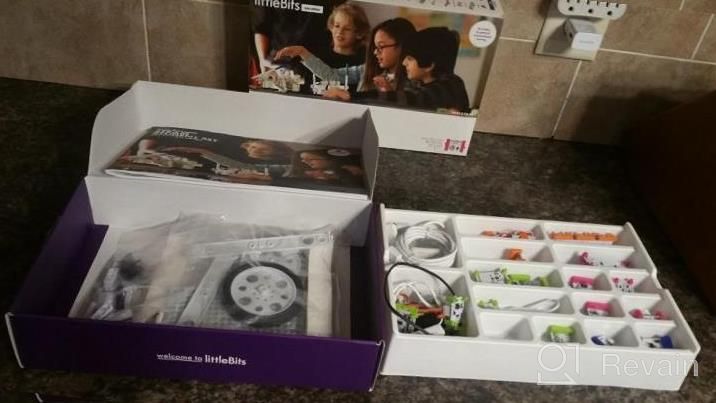
- Fun
- Can be overwhelming for young students who are not technologically inclined
New products
Comments (0)
Top products in 🔬 Science Kits & Toys
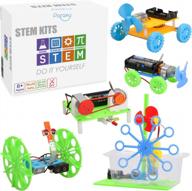
STEM Kit For Boys Ages 8-12, DC Motor Model Car Building Set, Electric Engineering Science Experiment Projects Gift For Kids 8 9 10 11 12

41 Review

Large Bug And Butterfly Net With 14" Ring, 32" Depth - Extends Up To 36" Handle For Effective Catching - Ideal For Insects, Birds, And More - By RESTCLOUD

39 Review
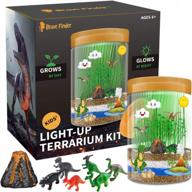
Light-Up Dinosaur Terrarium Kit For Kids, Volcano Science Kit For Kids Ages 4 5 6 7 8-12 Year Old Girl Birthday Gift, Arts And Crafts For Kids Ages 8-12, Educational Toys Creative Kids Games For Boys

29 Review
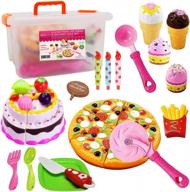
Interactive Pretend Cutting Play Food Toy Set For Kids - Includes Pizza, Ice Cream, Fries, Desserts, Storage Box, And Cake For Birthdays And Parties - Enhances Toddlers' Learning Experience

43 Review
Another interesting products
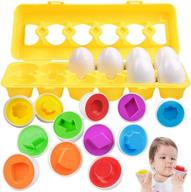
CPSYUB Toddler Toys 18 Month Easter Eggs Gifts For 1-3 Year Old Girls/Boys Montessori Matching Educational Color & Shape Recognition Learning BPA Free (12 Eggs)

31 Review
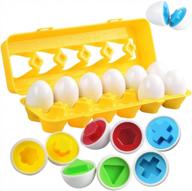
CPSYUB Montessori Matching Eggs: Educational Learning Toys For 1-3 Year Old Boys And Girls With Color & Shape Recognition Skills; BPA-Free Easter Eggs Gifts (Set Of 12 Toddler Toys)

33 Review
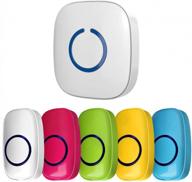
Educational Learning Games Buzzer With 5 Color Push Buttons - Great Tool For Activity Transitions And Game Show Zingers Attention Bell Answer Buzzers.

37 Review
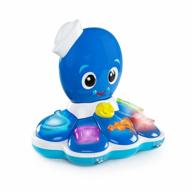
Baby Einstein Octopus Orchestra Musical Toy, Ages 6 Months +

41 Review

